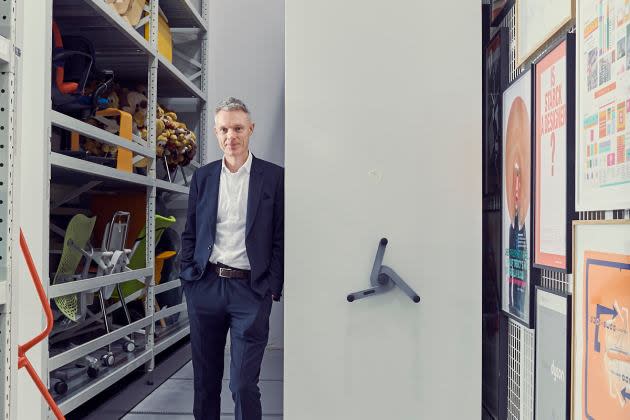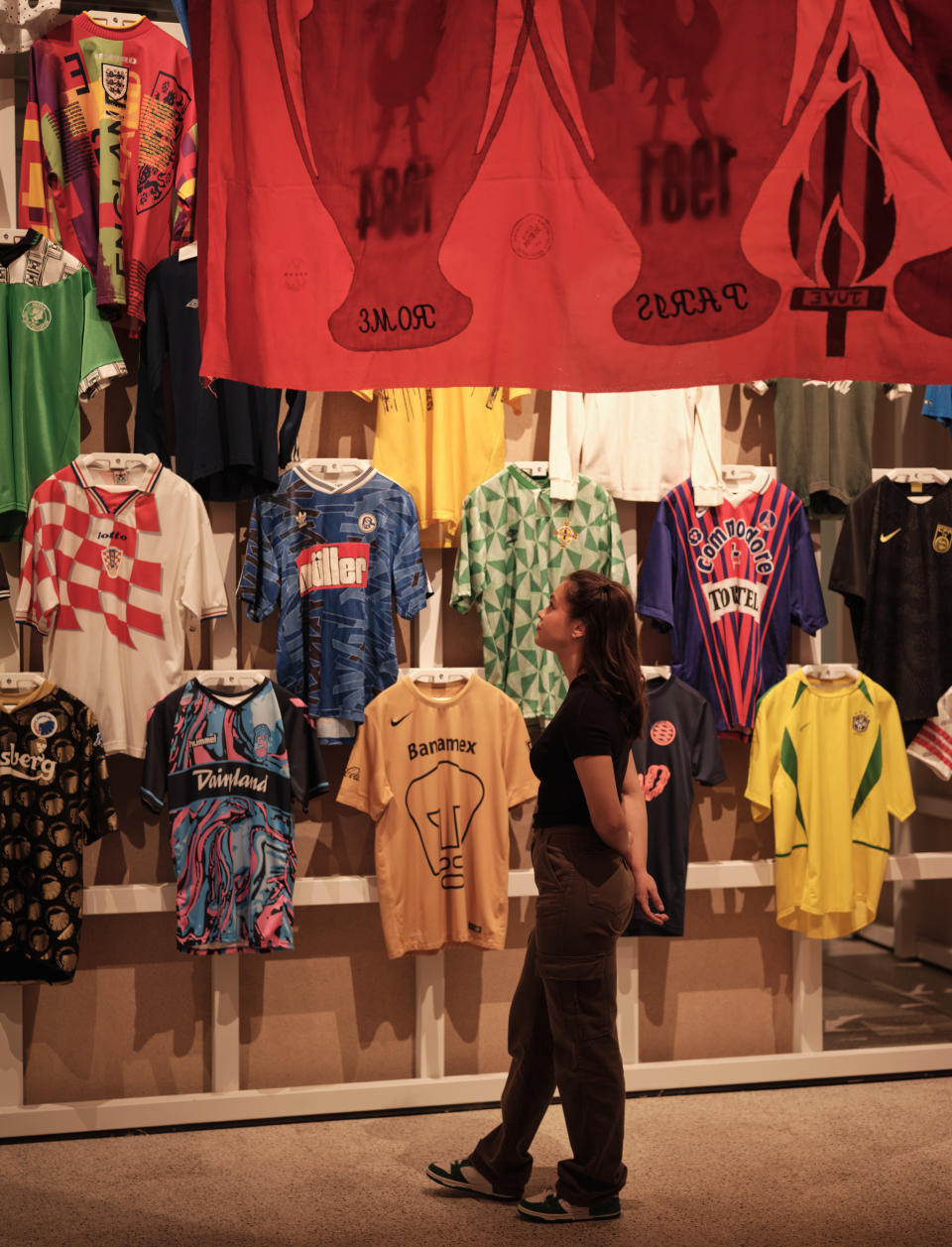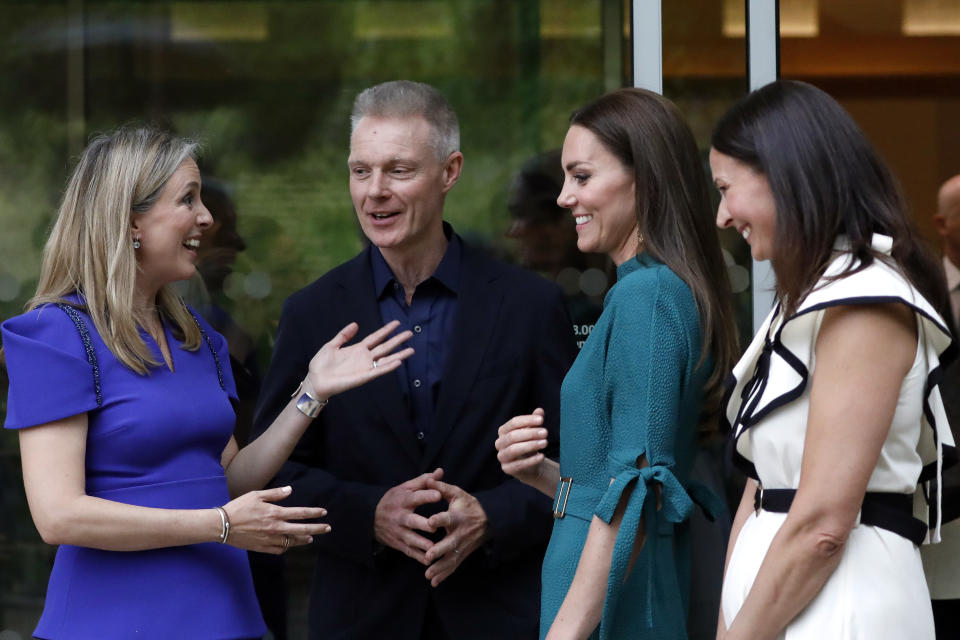Tim Marlow Lays Out His Vision for London’s Design Museum
- Oops!Something went wrong.Please try again later.

The Design Museum in London’s Kensington is full of space, nearly 108,000 square feet of it, and its chief executive officer and director Tim Marlow wants to use every bit.
“Although this is a beautifully distilled, refined building by John Pawson, I want things on the balcony. I make no bones about the fact I’m ruffling up a space,” says Marlow from his boxy corner office inside the museum.
More from WWD
“The purists will go, ‘Crikey, you put things on walls that were clearly not intended to have things on them.’ But we should do” that, he says enthusiastically, explaining that the free displays around the museum are meant to disrupt the space and expectations of what the museum should deliver.
To wit, he’s tapped the British-Nigerian multidisciplinary artist Yinka Ilori to bring his colorful, large-scale installation to the space. Ilori will take over from the London-based fashion designer Bethany Williams, whose recycled garments used to hang on the second floor.
“It’s open and democratic, and it sort of assaults you as you come into the museum,” says Marlow, who has big plans for the coming year. His rich, and diverse, palette of exhibitions is aimed at changing what he sees as the monocultural nature of the design world.
“Design is universal,” he says, and he wants to expose his audience to as much of it as possible.
In May 2023, the museum will open “The Offbeat Sari” curated by Priya Khanchandani, head of curatorial at the institution. The exhibition will track the history of the women’s garment and “the complex definitions of India today.”
Smaller institutions such as Marlow’s are racing past traditional establishments by tackling non-homogeneous topics. It wasn’t until this year that the Victoria and Albert Museum presented its first display of African fashion in its 170-year history.
Marlow joined the museum shortly before the pandemic began, and prior to that he was the artistic director at the Royal Academy of Arts in London. He also served as director of exhibitions at the White Cube art gallery for more than a decade.
His contact book includes artists ranging from Marina Abramović, David Hockney, and Antony Gormley to Ai Weiwei, who is collaborating with the museum on his first major design-focused exhibition.
Marlow believes that living creatives and designers should never be treated as “dead entities where you curate a retrospective of them that could be done at any time between now and 2099.” He loves the idea of working with living designers and architects.
Unlike some other British institutions, the Design Museum has been sharp in speaking directly to Millennial and Gen-Z cohorts, and staging shows that take in popular culture, retail, sport and fashion.

In 2021, the museum staged “Sneakers Unboxed: Studio to Street,” followed by “Football: Designing the Beautiful Game,” which took place earlier this year. Next year “Skateboard” will show how those sporty decks on wheels have evolved since the ’50’s.
Marlow understands that not every show will appeal to everyone, which is why his strategy has been to showcase a variety of themes at the same time. “We need to keep reminding ourselves that we can’t be all things to all people with every project, otherwise we become meaningless to everyone,” he says.
Right now, he adds, “we have four projects that are on, so I don’t have to worry too much about whether I’m reaching broad audiences because those projects will do it for me.”
Fashion is another area where he wants to disrupt norms. He believes clothing and accessories shouldn’t always have to be shown on mannequins in beautifully darkened, quasi-catwalk spaces.
“I want design in this institution to break out into all sorts of spaces, but fashion in particular, it has all sorts of possibilities that are not often fully explored,” says Marlow.
Well before Marlow arrived, the museum hosted “Azzedine Alaïa: The Couturier” in 2018. The show included more than 60 pieces from the late-Tunisian designer’s archive. Since then it has incorporated fashion into its exhibitions, such as “Amy: Beyond the Stage,” but it has never been a destination for fashion exhibitions.
As he plans for the future, Marlow is also looking at the needs of wider society and of the visitors to the museum. More than 50 percent of the museum’s visitors are under the age of 35 as opposed to the Royal Academy, where 60 percent of visitors were over 65 at the time he worked there.
Some 27 percent of the Design Museum’s audiences are non-white, ethnically diverse, which Marlow admits is not a statistic to trumpet, but notes that it’s “much higher than most” other cultural institutions.
“The social demographic of visitors to museums is still incredibly white and middle class, if we’re being brutal about it,” he says, adding that he’s trying to improve every day.
“A lot of what I’ve done could have been better. You have to try and take an organization on that journey of self-criticality in an open way. That’s how you learn and get better,” he says.
Marlow is candid about the challenges the museum faced during the pandemic. “It was a really destabilizing time because as a non-government supported institution we just had no idea how we were going to survive,” he says, adding that the museum had no debt, but was bailed out with a loan of 5 million pounds from the government’s 1.5 billion pound Culture Recovery Fund.

Although lockdown is now over, the U.K. is in the thick of a cost-of-living crisis with an expected recession in the fourth quarter of 2022. Marlow admits the next two years are going to be tough for everyone, including cultural and academic institutions.
What’s concerning him right now is an expected downturn in cultural visits because “people have to think about how they’re going to be [living].”
Ideally, he wants the Design Museum to be a public place with learning programs and a subsidized cost for visitors under 16. The learning program for schools is already free, and emerging designers receive free tickets.
“I want us to become local,” says Marlow. Even in the wealthy borough of Kensington, he acknowledges there is “real poverty and social hardship. I want us to be able to reach out to local community groups that give to the elderly, school children and families.”
Best of WWD

